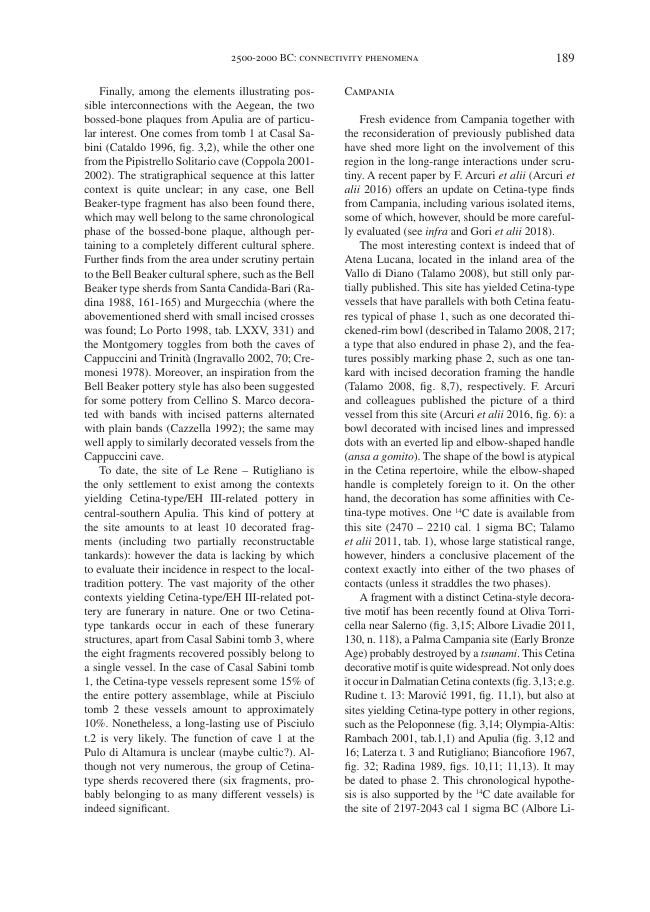2500-2000 BC : connectivity phenomena between the Balkans, Greece, Southern Italy, Eastern Sicily, the Aeolian Islands and Malta
P. 181-197
Recent research projects have provided new data to tackle the issue of longrange cultural contacts and movements of small human groups across the Central Mediterranean during the second half of the 3rd millennium BC. This complex phenomenon, whose epicentre was probably the Dalmatian culture of Cetina, implies intertwined processes of interactions between various regions. Unlike the previous periods, when evidence of cross-cultural contacts mostly consists of similarities in the material culture between regions, in the period under scrutiny it is possible to recognise both close parallels in pottery production and the circulation of imports/imitations of artefacts made of bone/antler, stone and metal.
The paper offers a brief reconsideration of the available data from the western Balkans, western Greece and from various contexts in southern Italy, Sicily and the small adjacent islands that were involved in these long-range interactions. A critical evaluation of the incidence of allogenous artefacts in the various contexts is also provided. The impact of the Bell Beaker phenomenon in the area under scrutiny is also discussed. This was in fact marginal, though Bell Beaker-type elements did actually co-exist with western Balkan-type ones in some of the examined regions. Finally, the chronological aspect of the ‘Cetina phenomenon' is discussed: two sub-phases in these processes of interactions are argued to be discernible, which helps a more detailed understanding of the socio-ideological mechanisms at play on the local scale. [Publisher's text]
Forma parte de
Rivista di scienze preistoriche : LXX, supplemento, 2020-
Artículos del mismo número (disponibles individualmente)
-
Información
Código DOI: 10.32097/1124
ISSN: 2282-457X



